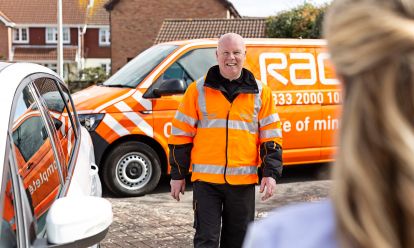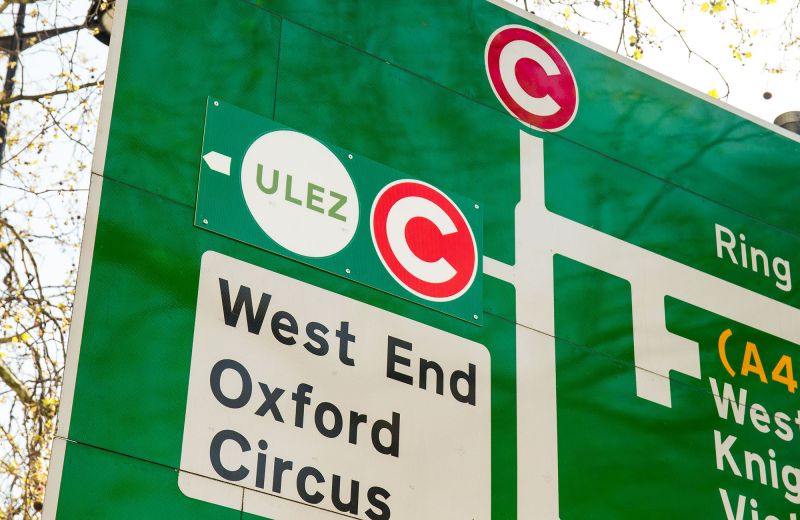The zero tailpipe emissions of electric cars mean some costs that owners of traditional vehicles have to pay – such as annual car tax – don’t apply. Hybrids and Plug-in Hybrid Electric Vehicles (PHEVs) also enjoy discounts.
- Should I get a hybrid, plug-in hybrid, or electric car?
- Types of electric vehicles – EVs explained
- Just one in every 1,000 drivers find for idling cars in Central London
The London Congestion Charge was introduced on 17 February 2003, designed to make the streets of the capital less gridlocked and less polluted. Enforced by automatic number-plate recognition (ANPR) cameras, the Congestion Charge zone initially covered the City of London area inside the London Inner Ring Road, but has expanded to include the West End district.
While traffic volume and levels of air pollution have reduced, Transport for London (TfL), which operates the Congestion Charge, says that diesel pollution from taxis and buses has increased.
In addition to the Congestion Charge, TfL introduced the London Ultra Low Emission Zone (ULEZ) in April 2019 to discourage drivers of the most polluting vehicles from using central London’s roads.
Whereas the Congestion Charge operates for 15 hours every day, the London ULEZ is in operation 24 hours a day, seven days a week. Christmas Day is the only day when the ULEZ is not enforced.
The London ULEZ is a template that many other cities will follow. There are already other Clean Air Zones (CAZs) in operation in Bath and Birmingham.
This guide will tell you what you need to know about the London Congestion Charge and ULEZ when you navigate the capital’s streets in an electric car.
Congestion Charge: do EVs need to pay?
The good news for EV drivers is that battery electric cars – and hydrogen fuel-cell vehicles – are exempt from the London Congestion Charge via the Cleaner Vehicle Discount.
The standard daily cost for the London Congestion Charge is £15. The zone operates from 07:00 to 22:00 every day, with the charging clock reset at midnight. The Congestion Charge does not apply on Christmas Day.
If you don’t pay the daily Congestion Charge by midnight on the third charging day that follows it, you will receive a Penalty Charge Notice (PCN) of £160. This has to be paid within 28 days, but if you pay within 14 days, the fine drops to £80. If the penalty isn’t paid within 28 days, a £240 Charge Certificate is issued.

What is the Cleaner Vehicle Discount and how do I apply?
Electric cars and hydrogen fuel-cell vehicles are exempt from the London Congestion Charge under the Cleaner Vehicle Discount. PHEVs that emitted no more than 75g/km of CO2 and had a 20-mile electric-only range were exempt until recently, but their drivers now have to pay.
You need to apply for the Cleaner Vehicle Discount (CVD) online and supply certain documents to prove that your car is entitled to it.
For UK-registered cars, you will need proof of the V5C vehicle registration certificate (logbook) issued by the DVLA. Non-UK-registered cars must have registration documents issued by vehicle licensing agencies that clearly show the registered vehicle has a fuel type of 'Battery Electric' or 'Hydrogen Fuel Cell'.
Images of these requested documents can be uploaded at the time of application, or copies can be sent by post or email later.
Each CVD vehicle registration costs £10 and will need to be renewed every year. TfL will notify you when your discount is due to expire.
The Cleaner Vehicle Discount only runs until 25 December 2025. After this date, electric cars will no longer be exempt from the London Congestion Charge.
- 2030 ban – is it worth buying an electric car now?
- Electric car charging – how it works and how much it costs
- Climate activists let down tyres on ‘gas guzzler’ SUVs
Aside from zero-emission vehicles, there are other Congestion Charge exemptions. Motorcycles don’t have to pay the charge, along with disabled Blue Badge holders. Residents can also get a discount, but this scheme is currently closed to new applicants.
Read the full RAC guide to the London Congestion Charge here.
Electric car news
Stay up to date on all the latest and upcoming developments in the EV world.
The London ULEZ and electric cars
Electric cars are also exempt from the London ULEZ, potentially saving a further £12.50 a day on top of the Congestion Charge.
First introduced on 8 April 2019, the London ULEZ expanded on 25 October 2021 to an area 18 times the size of the original zone. It now covers every borough inside the A406 North Circular Road and the A205 South Circular Road. However, the Circular Roads themselves are not included in the new zone.
Vehicles must meet a minimum emissions standard to enter the ULEZ and avoid paying a charge. This is Euro 4 for petrol vehicles, and later Euro 6 standards for diesels. Check if you need to pay the ULEZ charge here.
If your vehicle doesn’t meet these standards and you don’t pay the ULEZ charge when you should, a penalty of £160 will apply. This is reduced to £80 if paid within 14 days.
The daily £12.50 charging period runs from midnight to midnight. If you drive within the designated ULEZ area across two calendar days, before and after midnight for example, you will need to pay two charges.
Read the RAC’s comprehensive guide to the London Ultra Low Emission Zone here.
- Electric vehicle range – how far can I drive in an EV?
- Make EV charging easier with the RAC home charge point installation service
- EV maintenance, service, and repairs guide
Clean Air Zones in the UK and abroad
A Clean Air Zone (CAZ) is an area within a town or city that limits the traffic coming into it, to improve air quality.
These zones are being introduced in cities across the UK, and although not every CAZ levies a charge on private cars, the Birmingham CAZ penalises cars that do not meet certain emissions standards. Electric cars are exempt from charges.
Read all you need to know about the Birmingham Clean Air Zone in our guide here.
Bath introduced a Clean Air Zone in March 2021, and although it doesn’t charge private cars and motorcycles, those driving taxis, vans and trucks are affected. Find out more about the Bath CAZ in our comprehensive guide.
CAZs are set to become a fixture in many cities across the UK – as soon as 2022 – including Bristol, Liverpool, Manchester and Newcastle. Portsmouth introduced one even earlier in November 2021.
- Clean Air Zones – what are they and where are they?
- Buy a car with RAC confidence with RAC Cars
- Call for electric car charge watchdog to regulate prices

European cities are also introducing Clean Air Zones. France operates the Crit’Air scheme, which requires cars to display a ‘clean air’ windscreen sticker to identify emission levels of vehicles. This may restrict access to cities such as Grenoble, Paris, and Strasbourg where the scheme is in place.
In summary, driving an electric car could save you money, particularly if you live in London. And although EVs won’t always be exempt from the capital’s Congestion Charge, buying one will help you future-proof your motoring against additional costs and restrictions, such as city Clean Air Zones.
The RAC is leading the way when it comes to supporting drivers in the switch to electric vehicles.
An increasing number of our patrol vans have built-in emergency mobile charging systems that can give an out-of-charge electric car enough power to be driven a short distance home or to a working charge point. Our All-Wheels-Up recovery system also allows our patrols to rescue electric cars safely without the need for a flatbed.
Find out more about the RAC’s electric car breakdown cover.
RAC Breakdown Cover
Join the RAC and get breakdown cover. Our patrols fix 4 out of 5 vehicles on the spot, with repairs done in just 30 minutes on average.












